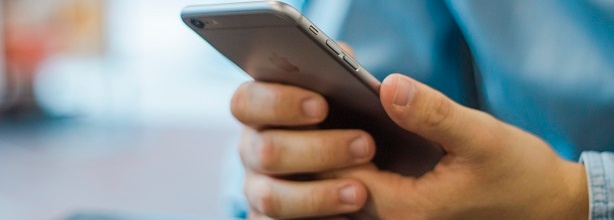 I appreciate that some readers will not be old enough to remember life without a mobile phone. But for those of us who are, it is interesting to reflect on what happened when we went on a development programme for a couple of days. How did we keep in contact with the workplace so that things didn’t fall apart in our absence?
I appreciate that some readers will not be old enough to remember life without a mobile phone. But for those of us who are, it is interesting to reflect on what happened when we went on a development programme for a couple of days. How did we keep in contact with the workplace so that things didn’t fall apart in our absence?
The short answer is that we didn’t. Instead we had meetings before we left, we gave people instructions, and if the unexpected happened whilst we were away, people either waited until we got back, or they took their own initiative and dealt with it themselves.
And what was the impact on the development? Did people focus more on what they were learning? Well there were certainly no distractions. Learning and development, regardless of the topic is a way of helping us to step away from the business, the people, the role we do, and view them with fresh perspectives. We often talk to people about using the learning and development space as a time to work “on themselves” or “on the business” rather than working “in the business”.
If people choose to access their phones/devices during a learning session then of course their attention shifts away from what is being said in the room, and they cease to listen. But even if device usage is restricted to break-times, the minute that people receive and read an email or text their focus of attention shifts back “into the business”, and therefore disrupts the flow of thinking and reflection. Insights and ideas that often bubble to the surface during those breaks may therefore be lost. Breaks also provide a valuable opportunity for networking and meeting colleagues you don’t often see. This opportunity will be lost if your time is taken talking to those you always see back at the ranch. The iPhone therefore can have a profound disruptive effect on not just your learning but the value you get from your programme.
But there is another area of impact. When we help people to transition from managers to leaders, we again refer to working “on the business” rather than “in the business”, and a key enabler to making this transition is to develop your people so that they can work “in the business” more effectively. When we receive an email/text on our mobile device from the office, the minute we respond to it we are sending an implicit message. “I may be on a development programme but it is perfectly acceptable for you to keep messaging me with any problems and I will sort them out for you.” And it only takes one reply from you to start the ball rolling. You can imagine the conversation in the office: “Oh I know she’s picking up messages, so go ahead, send her an email. It’ll be fine.”
But it isn’t fine. Rather than taking initiative in your absence, and doing something which perhaps takes them out of their comfort zone, people are still relying on you. And this stops them learning for themselves. So by replying to that first text/email you have erased the possibility that, during the time you are away, people will start to step up and develop themselves. So the mobile device is not only impacting your learning, it is impacting the learning of others. And if your employees do not begin to develop and grow, how can you begin to step up to being a leader who works “on the business” rather than “in the business”?
People often say “Oh I couldn’t possibly just ignore messages; people expect me to reply.” This is most often said in relation to clients. In the days before mobile devices became ubiquitous, clients, as well as your employees, understood that you would not be contactable. Expectations have now changed. Therefore the key to reducing the impact of the mobile device on everyone’s learning and development is to set expectations in advance. Set up an out of office message and have conversations before you leave to let people know why you will not be responding, who to contact in your absence, what kind of decisions they can make in your absence, what kind of decisions you would prefer to be consulted on when you get back.
At Cranfield we do not “ban” the use of mobile devices during our development programmes. People are adults; they make their own choices. We do believe, however, that people should be mindful of the impact that the mobile device has on their learning, the learning of the people who are not in the training room, and on the growth of talent within the business, and therefore on the business itself.
We also recognise that “context is king”. If an organisation’s culture is such where everyone is on their mobile device 24/7, then to prevent people from using them on a development programme creates stress and an artificial situation which is unsustainable when participants return to the workplace. People need to learn and develop within the workplace, not just in a business school environment, so we encourage people to reflect on the impact that the mobile device has on the learning environment and make their own choice.
We also work with groups to encourage them to come up with ways to manage the impact on their learning. We help them to create ways of working that ensure they get the reflective space they need in which to learn, yet doesn’t conflict with their organisational culture. In this way they are more likely to sustain that behaviour when they return to the workplace.
Sustainable management of the impact created by interruptions from our mobile devices is crucial if people are to transition from managers to leaders, to working “on the business” rather than “in the business”.
For the past 5 years I have been researching the connections between executive development and organisational impact. Over the next two months I will be sharing some key findings in a series of three blogs:
- Executive Development – Pleasure or Pain
- Executive Development – Who is in the room?
- Executive Development – Risk and Rewards



